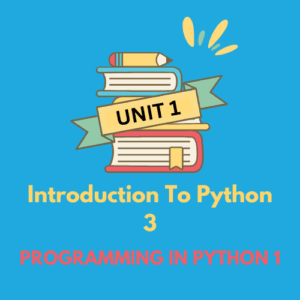
Click On the Download Button Below 
Introduction to Python 3 :-
Python is a versatile and high-level programming language known for its simplicity and readability. Designed by Guido van Rossum and first released in 1991, Python emphasizes code readability and allows developers to express concepts in fewer lines of code compared to other languages. Its syntax is clean and easy to understand, making it a popular choice for beginners and experienced developers alike.
Python supports multiple programming paradigms, including procedural, object-oriented, and functional programming. It is widely used in a variety of fields such as web development, data analysis, artificial intelligence, scientific computing, automation, and more. With a large and active community, Python also has a rich ecosystem of libraries and frameworks, making it highly adaptable to different use cases.
Objectives of Introduction In Python 3 :-
- Understand the IDLE
- Learn use of user define function and its application
- Understand the List, Tuple
- Understand the mutable
List of References for Introduction In Python 3 :-
- Charles Dierbach, Introduction to Computer Science using Python, Wiley, 2013
- Paul Gries , Jennifer Campbell, Jason Montojo, Practical Programming: An Introduction to ComputerScience Using Python 3, Pragmatic Bookshelf, 2/E 201
Summary of Introduction In Python 3 :-
In this chapter we studied the use of Interactive and script modes
of IDLE, running a script, restarting the shell.The compound statement def
to define functions; the role of indentation for delimiting the body of a
compound statement; calling a previously defined function.Compound
data types str, tuple and list (enclosed in quotes, parentheses and brackets,
respectively). Indexing individual elements within these types. Strings and
42
tuples are immutable, lists are mutable. Built-in functions min, max, sum.
Interactive solution of model problems, (e.g., finding the square root of a
number or zero of a function), by repeatedly executing the body of a loop
(where the body is a statement list)
